Last week I was invited to Learn the art of Jamón carving at Camino Bankside with Chef Nacho del Campo.
Camino’s new tapas bar has just opened behind the Tate Modern and celebrates the exciting diversity of regional Spanish cuisine. With an open jamón counter, beautiful tiled floors and a large south-facing outdoor terrace it's the best place to make the most of any warm weather that comes our way.
During the masterclass I learnt how to prepare, slice and serve Jamón directly from the leg, which is a lot harder than it looks! With plans to serve the family Jamón over the festive period I used my time at Camino wisely, and learnt:
- Store your whole, bone-in jamón in a cool, dry and ventilated place, either resting in a holder (jamonero) or hung by the rope.
- Start by removing the layer of fat from the top and the sides of the ham until the meat is exposed - if you plan to consume the entire ham in a day or two, you can remove the skin and fat completely. If not, it is better only to to remove the skin and outer fat layer from the area to be sliced that day.
- To enjoy the flavor and texture of a fine jamón, slice the ham with a long sharp knife in the following order: first the rump half, then the rump end and lastly the shank.
- Slices should be thin, of medium size, and contain a certain amount of the marbled fat that gives them their particular succulence.
- The meat nearest the bone should not be sliced, but cut into "tacos" or small chunks, used to enrich soups and stews (the ham bone itself also adds great flavour to broths, soups and stews).
- Each time you slice the ham, protect the cut area with some of the larger pieces of lard and rind, so that the fat on the surface always remains fresh. To further protect the ham it is recommended that you cover it with a clean dish towel. If the meat has been left exposed to the air for some time, discard the first slice as it will be dry and tough.
I learnt there are four grades of jamón ibérico, categorised primarily by the
diet of the pigs. The curing process remains the same, but the length
for which they are aged will differ. The age difference can be seen in the finished result with the flesh
of the younger hams having a lighter pink colour and those of older hams
being a deep, ruby red.
We were told that spain produces an astonishing 40m hams a year, and the production of jamón ibérico is strictly regulated. Iberian piglets are fed on a diet of cereals and acorns until they
are nearly 18 months old. The final three months of their lives between October to January are spent outside to allow the pigs to gorge on acorns that fall from oak trees (regulations state each pig should consume
between 6 and 7kg of acorns a day).
The acorns from the encina oak trees are rich in oleic acid, the same chemical which can be found in olives, which finds its way into the fat of the animal. This gives the ham it's unique flavour, with the locals referring to Iberian pigs as "olives with legs".
The curing and ageing of the hams is no less important than the rearing and butchering of the animals. The front legs, the paletas, and the rear legs, the jamones, are chilled overnight to allow them to firm and then covered in Andalucian sea salt for approximately one day per kilo of weight. They are then washed and hung to dry allowing the natural flora to form on the surface. This final part of the curing process can take up to three years, after which they are ready for sale. But not before one final check from the DO inspectors, who test the hams one more time by inserting a sharpened beef bone and sniffing to check the quality of the cure.
The acorns from the encina oak trees are rich in oleic acid, the same chemical which can be found in olives, which finds its way into the fat of the animal. This gives the ham it's unique flavour, with the locals referring to Iberian pigs as "olives with legs".
The curing and ageing of the hams is no less important than the rearing and butchering of the animals. The front legs, the paletas, and the rear legs, the jamones, are chilled overnight to allow them to firm and then covered in Andalucian sea salt for approximately one day per kilo of weight. They are then washed and hung to dry allowing the natural flora to form on the surface. This final part of the curing process can take up to three years, after which they are ready for sale. But not before one final check from the DO inspectors, who test the hams one more time by inserting a sharpened beef bone and sniffing to check the quality of the cure.
Camino is offering the experience for £30/person along with the opportunity for you to purchase a leg of your own to show off your new skills. Spaces are very limited and can be booked here.

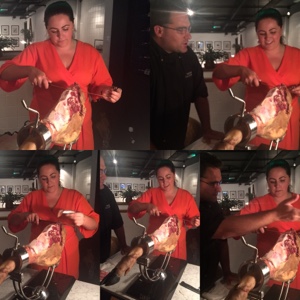
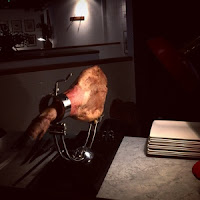

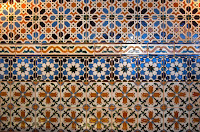


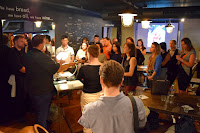
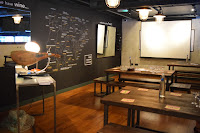







No comments:
Post a Comment
Twitter: CharAimeeClarke
© Charlotte Aimee Clarke 2010